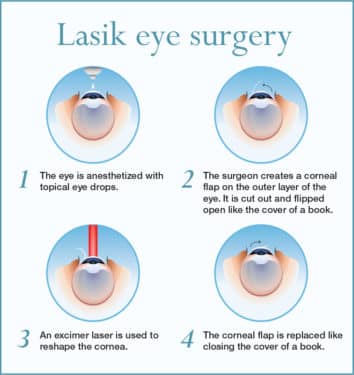Understanding The Various Types Of Intraocular Lenses For Cataract Surgical Treatment

Article created by-Rask Therkelsen
During cataract surgical procedure, your all-natural lens is eliminated and changed with an artificial lens. Your cosmetic surgeon will talk about with you the various kinds of IOLs available to minimize or eliminate your need for glasses after surgical treatment.
Standard IOLs have one concentrating distance and also are generally set for clear distance vision. Costs IOLs, additionally called multifocal or accommodative lenses, have zones with different focusing strengths to enable you to see far and wide objects without glasses.
Monofocal IOLs
Standard monofocal lenses are utilized most frequently to deal with cataracts throughout a procedure called refractive lens exchange (likewise referred to as clear lens exchange). The cataractous natural lens is replaced with an artificial one, leading to improved vision.
These IOLs provide clear vision at a solitary range. They are commonly set to maximize your distance vision, but you will certainly still need reading glasses for near things.
Read the Full Piece of writing are made from an acrylic product that is flexible and also foldable. This allows your eye doctor to place them into the same incision whereby your all-natural lens was gotten rid of throughout surgery. Your ophthalmologist can discuss your IOL choices with you and also suggest the very best course of action for your aesthetic needs.
Multifocal IOLs
These superior lenses provide a series of emphasis regions, getting rid of the need for glasses to see up close, far or in between. This is accomplished through several specifically created concentrating powers or by fitting (transforming form) the lens. It might take a while for your brain to adapt to these lenses, however the vision they supply is well worth the effort!
These lenses are separated right into 2 major classifications based on just how they bend light to produce several retinal images. They can be classified as refractive multifocal and diffractive multifocal lenses.
Refractive Multifocal IOLs possess several curvatures to develop "refractive zones" that bend light to generate multiple retinal pictures with different dioptric powers. This enables a higher level of photo quality without hing on the size of the student. Instances include the Tecnis Multifocal as well as Panoptix.
Toric IOLs
In individuals with astigmatism, the contour of the cornea is slightly incomplete, so light entering the eye is not focused in one spot on the retina. This causes blurred vision. Throughout cataract surgical procedure, toric IOLs are lined up so the lens's steepest section matches this curve and creates clear, sharp vision.
Toric IOLs are a fantastic alternative for people who require cataract surgical procedure as well as intend to reduce their reliance on glasses or get in touch with lenses. Nonetheless, mouse click the following website page needs to be flawlessly lined up for optimum visual outcomes. For see this website of imbalance, the IOL is 10% much less reliable.
To reduce the danger of postoperative IOL rotation, the ocular viscoelastic gadget (OVD) ought to be completely removed from the capsular bag before IOL insertion. Throughout this action, the cosmetic surgeon should thoroughly note the steepest factor of the cornea to help direct the IOL's axis after it is implanted. This aids stop the client from needing to go through surgery once more to have the IOL re-aligned.
Prolonged Deepness of Emphasis (EDOF) IOLs
A brand-new technology has actually recently arised in the therapy of presbyopia called Extended Depth of Focus (EDOF). These lenses utilize a solitary lengthened focal point to boost range of vision. The resulting lenses do not have the several points of focus of multifocal IOLs, which can trigger halos and also glare for some people.
An optimal EDOF lens would supply a sharp emphasis over a variety from plano to -1.50 D, enabling patients to see near, intermediate, and range objects without glasses. The initial EDOF IOL to be introduced was the diffractive style of the Tecnis Symfony IOL, which utilizes light-splitting rings to prolong the range of vision. However, this style can cause a reduction on the other hand level of sensitivity that several patients do not endure well.
A more recent non-diffractive EDOF IOL is the Vivity IOL, which integrates aspheric optics with a pinhole style to enhance deepness of emphasis. This style reduces caused aberrations and might result in much better contrast sensitivity, though it does not totally proper for astigmatism or enable useful near vision.

